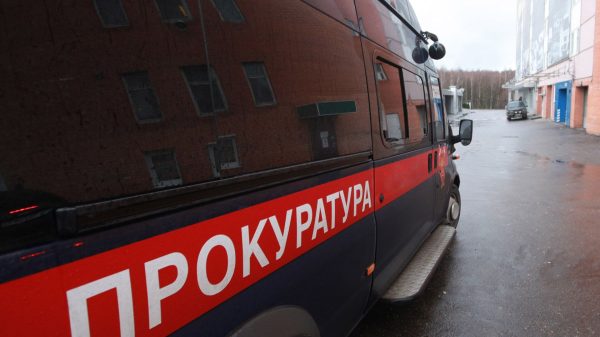California’s most vulnerable immigrants have faced unprecedented challenges this year, with some weighing whether it’s worth staying in the United States altogether.
Ten months of a pandemic that has disproportionately sickened immigrants and devastated some of the industries that rely on immigrant labor, combined with years of anti-immigrant policies by the Trump administration have exacerbated insecurities for undocumented people and immigrants working low-wage jobs across California.
For immigrants at the bottom of the economic ladder, it’s never been easy in the US, said Luz Gallegos, the executive director of the immigrant advocacy group Training Occupational Development Educating Communities Legal Center (Todec).
“But California was also always a place where my family – my parents and grandparents – believed they could build a better life,” said Gallegos who was born into a family of immigrant activists and organizers. “It was always a place with potential.”
Until this year.
“There’s been so much fear and trauma – just layers of trauma,” she said.
Why millions of Americans still can’t get coronavirus relief funds
Read more
Workers at mega-farms and massive warehouses across California’s Inland Empire and Central Valley– many of whom have continued to toil through the most severe stretches of the pandemic despite coronavirus outbreaks at many facilities – have been coming to Gallegos for advice on what to do when they get sick.
One family she spoke with recently asked her if there was a community clinic they could go to for Covid treatment, instead of the county hospital. As green card applicants, they were worried that if they sought government healthcare they could be denied permanent residency due to the Trump administration’s so-called “public charge” rule, which allowed the government to deny residency to immigrants who rely on public benefits. Gallegos said she tried to explain that going to a county hospital wouldn’t disqualify them – and moreover, a federal court had recently blocked the rule from being implemented. “I told them, you should think about your health first. You’ll have no use for a green card if you’re not alive,” Gallegos said.
But they couldn’t stand the uncertainty. So, the grandmother, mom and two young children instead relocated across the southern border. The kids, both US citizens, are still able to cross the border to attend school.
“It’s not even that the country is not welcoming any more, it’s just not an option any more,” said Gallegos. “I hear that all the time from people here, and from friends and family in other countries.”
Javier Lua Figureo moved back to his home town in Michoacán, Mexico, three years ago, after living and working in California for a dozen years. Since the pandemic hit, several of his friends and family members have followed his lead, he said.
“Things aren’t perfect in Mexico,” Figureo said in Spanish. But at least there’s access to healthcare, and some unemployment benefits for those who need it, he added. “In comparison to what it was in the US, the situation for us in Mexico right now is much better.”
Although California’s coronavirus case tracking data doesn’t track immigration status, studies and surveys have found that the pandemic has taken a disproportionate toll on the state’s immigrant population. Or, as researchers at UC Berkeley put it: “Even though the virus is blind to people’s citizenship or visa status, immigrants can be especially vulnerable to infection, serious illness, financial hardship, and hateful discrimination.”
Immigrants are more likely to work on the frontlines of the pandemic, as healthcare workers, grocery store clerks, delivery drivers and farmers, where their chances of contracting the virus are especially high. A third of all physicians are immigrants, and so are at least half the nation’s farm workers. An estimated 75% of farmworkers in California are undocumented immigrants.
Even before the Trump administration implemented its anti-immigrant policies, and even before the pandemic hit, non-citizens had less access to healthcare and health insurance, as well as safety net programs like food stamps and unemployment. In May and June, undocumented immigrants were not eligible to get stimulus checks from the federal government.
A $125m fund to send a one-time cash grant of $500 offered to workers without legal status dried up quickly, and was a drop in the bucket. The state’s governor, Gavin Newsom, vetoed a bill that would have provided low-income immigrants $600 for groceries.
“It feels like discrimination,” said Pedro, who is 41 and works at a cauliflower farm in Riverside county, east of Los Angeles. In March, he lost work, and couldn’t make rent. And as California faces a surge in coronavirus cases, he said still doesn’t know what he’d do if he or his wife contracted Covid-19 – they don’t have health insurance, and without legal documents, they don’t feel safe going to the county-run free testing sites.
Meanwhile, it unnerves him to see border patrol agents about town. “I’m scared to even go out to buy things for my daughters,” he said, in Purépecha. The Guardian is not using Pedro’s last name to protect him and his undocumented family members.
There’s no extensive data on how many immigrants have decided to move back to their home countries.
One recent analysis of US census data by researchers at UC Merced estimates that, the total immigrant population – including naturalized citizens, documented and undocumented immigrants – in the US dropped by 2.6% in 2020, the largest percentage decline in two decades. In California, the immigrant population dipped by more than 6% from, the report estimates, about 10.3 million in 2020 to 9.7 million this year. The report was based on the Census bureau’s monthly population survey of 60,000 US households. Researchers said they’re waiting to see if the trends will hold up in a larger Census Bureau survey of millions of people, which has not yet been completed.
Pandemic-era travel restrictions and barriers to legal immigration, deportations, as well as dire economic conditions and a lack of access to safety net programs for unemployed migrants could explain these numbers, demographers told the Guardian.
“The only precedent for this kind of drop in the immigrant population was the Great Recession,” said Edward Flores, a UC Merced sociology professor who conducted the analysis. At the height of the recession, in 2009, the immigrant population dipped by 1.6%, before picking back up again.
Whether the undocumented immigrant population in the US and in California specifically is reducing is difficult to tease out, said Julia Gelatt, an analyst at the Migration Policy Institute in Washington DC. People without legal status are less likely to respond to surveys, especially ones they believe are associated with the government.
Throughout US history, there have been “periods of inclusion, and periods of exclusion”, said Rubén G Rumbaut, a sociologist at the University of California, Irvine. National crisis and economic recession have, at times, triggered xenophobia and hostility toward immigrants. “When there’s a perception of threat, it becomes easier for leaders to manipulate the masses to scapegoat foreigners,” he said.
“But California’s economy, even more now, is heavily dependent on immigrant labor,” Rumbaut added. “And once the pandemic is brought under control, immigrant labor will be essential to economic recovery.” Joe Biden’s incoming administration – as well as California lawmakers, he said, will do well to recognize that.
For Pedro, Biden’s election victory has brought a sense of relief. For now, “I’m not thinking of going back to Mexico,” he said. His sister – who left when she couldn’t find work in southern California – now regrets it, he said. Jobs are even scarcer across the border. There’s still good reason that so many immigrants have come to, or want to come to California, he said: they come to work.
“I’m here to provide for my family,” he said. And he hopes that in the coming year, that’ll be at least a bit easier to do.
• This article was amended on 31 December 2020. An earlier version suggested non-citizens were ineligible to receive stimulus checks in May and June. The intended reference was to undocumented immigrants; and the payments were for up to $1,200, not $2,000 as the article previously stated.




















































Свежие комментарии